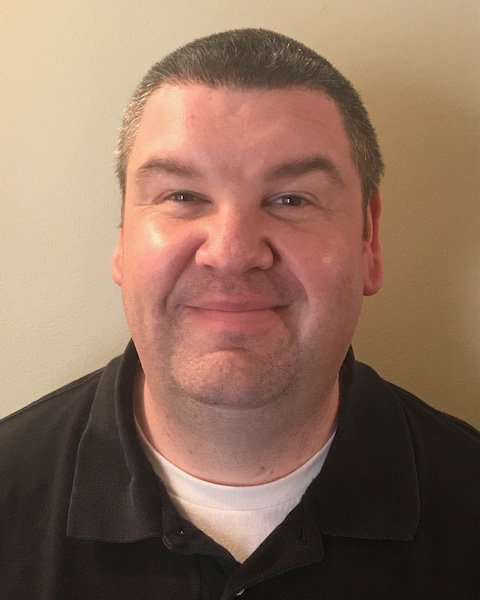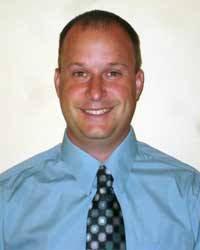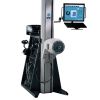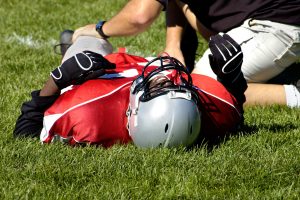
Career Q&A With 3 Athletic Trainers
Practice ManagementThree successful ATCs share how they got started, describe their typical work day, and give advice for future Athletic Trainers.
March is Athletic Training Month! We recognize the outstanding services provided by Athletic Trainers in all settings who make a difference in the lives of the athletes, soldiers, workers, performers, students, and other patients that they work with. This month, I sat down with several Athletic Trainers to learn more about them, what they do, and why they chose this profession.
Today, Certified Athletic Trainers (ATCs) have more options for their career path than ever. Expanding from university athletic programs, secondary schools, PT clinics, and hospitals, ATCs have exciting opportunities in several other emerging fields, such as the military and industrial or occupational health domains. In each of these settings, they bring with them the education needed to make a profound difference in the health of individuals and employers.
In the following Q&A, three ATCs share how they found their passion for the field and where their professional journey has taken them, and offer advice for those who wish to pursue a career in athletic training.

Bob Stacey, MA, ATC, ROT
Athletic Trainer
NorthShore University Health System
Chicago, IL
Bob, tell me a little about how you got in to the field of Athletic Training
I was interested in entering the field of athletic training while in high school. I was an athlete and had the chance to work with our ATC for an injury. I saw this as something I felt that I would be interested in doing as I was looking into a career in the medical field and enjoyed being around athletics. This seemed like the perfect fit. After I had completed my rehab with the school ATC, I continued to work with him in the training room and began to learn more about the profession and realized that it really was a great fit for what type of career I was looking for.
What is a typical day like in your current setting?
My typical day consists of seeing about 15 – 25 patients in the day and performing the everyday tasks mentioned above. The hours are a typical 9 – 5 and in between seeing patients there are lots of opportunities to answer phone calls and questions from patients and parents of pediatric patients. During this time, I also assist with casting and splinting for patients seen by the physician I work with as well as other physicians in the building.
How do you define success in your job setting?
For me, when I see a patient I know I helped return to sport or even just activities they enjoy doing, I count that as a success. Knowing that I played a key role in the recovery of an injured person is extremely rewarding. In the office, I feel that it is a success if the patient returns to you for a different issue or refers friends and family to you as well because that means that you have positively impacted their recovery and built a trust that they believe in you to make them or their family better.
What advice would you give to others seeking a career in Athletic Training?
I would advise them to work in as many different settings as possible and ask lots of questions regarding the pros and cons in each setting. Not every setting is right for each person and by experiencing as much as possible you will have a better idea of what is right for you. I also would advise to do as much hands-on experience as possible. The knowledge that you learn in classes and labs will translate much easier when you are dealing with the injury or treatment of an individual in a real situation. The practical skills you gain by being around those teaching you will be priceless as you set out on your own.

Larnie Boquiren, MS, ATC
Director of Sports Medicine
USA Water Polo
Los Angeles, CA
Tell me about your background and education that led you to Athletic Training
Like most athletic trainers I enjoyed sports, especially volleyball and basketball. I enjoyed medicine and thought I was destined to be a nurse like many Filipino women in my family. While I did explore this option, it wasn’t as appealing as combining medicine with sport.
I earned my undergraduate degree from Cal State Fullerton where I was mentored by Julie Max and Dr. Robert Kersey. I earned a Masters degree in Sports Health Care at A.T. Still University, School of Heath Sciences in Arizona. I continued my education in an athletic training fellowship program with the New Hampshire Musculoskeletal Institute.
Describe your current role and how you got here
I currently serve as the Women’s Sports Medicine Manager for USA Water Polo. They were 2016 Olympic Gold Medalists. My main responsibilities are the day-to-day care for our senior national athletes, developing and implementing our multidisciplinary heath care provider network, and streamlining care to our national teams.
After my fellowship with the New Hampshire Musculoskeletal Institute, I accepted a position with Crossroads School in Santa Monica, California. I served nine years as a middle school physical education teacher and Athletic Trainer. I was thankful for the three-month vacation in the summer because it allowed me the opportunity to volunteer with USA Volleyball for six seasons, and it also provided me the financial support for continuing education.
The experience and relationships that I built with the sports medicine staff inspired me to be a better clinician. I am fortunate to experience the growth of their sports medicine program to help serve as a role model for the development of a multidisciplinary sports medicine program for USA Water Polo.
What is a typical day like for you with the Water Polo team?
My day starts at 5:30am so I can prep for treatments from 6 – 7am. Depending on the day, the team will lift from 7 – 8:30am. During this time, I’ll observe the lifting session, speak with our strength and conditioning coach, and prep post-lift recovery nutrition. The athletes will be in the water from 8:30 – 10:30am.
I do our hydration and in-training fueling, watch practice, prep for fueling after the morning session, and set-up cold bath recovery. Then I meet with our massage therapist or chiropractor or acupuncturist about athletes that are scheduled for the afternoon.
From 11:00am – 1:30pm, I have scheduled treatments for manual therapy, mobility, corrective exercise. From 1:30 – 2:00pm, we have a team meeting and the team is back in the water from 2 – 4:30pm. Afterwards, I’ll talk with our sport dietitian about our fueling plan, prep post-training fueling, and then meet with one or two athletes before leaving for the day around 5:30pm.
What advice would you give to someone who is new to the profession or trying to determine if this profession is right for them?
Continue to learn what your values are in developing the best version of yourself. Your values are the intangibles in whatever you choose in life. For me, these include trusting the process of failure and success, having the will to do whatever it takes, and surrounding yourself with those who are driven for excellence.

Dustin Eslinger, MA, LAT, ATC, ITAT
Director of Athletic Training Consultants
Physical Therapy Consultants
Bethel, MN
Dustin, what was your journey in to becoming an Athletic Trainer?
I identified Athletic Training as a possible career choice during my senior year in high school when I knew I wanted to do something in healthcare. I also enjoyed being around completive athletics and these two interest areas made athletic training a natural fit. I received my Bachelor’s of Science in Athletic Training from North Dakota State University in 2003 and my Master’s of Arts degree in Athletic Training from Western Michigan University in 2005. Not only did I gain valuable classroom knowledge during this time, I was able to gain even more valuable clinical and practical experience.
Where are you working now?
I currently work as the Director of Athletic Training Services for Physical Therapy Consultants, Inc., an out-patient Physical Therapy private practice with multiple clinic locations. I oversee athletic training for our company, including contracts to provide services to area high schools and businesses, supervise our other staff athletic trainers, provide treatment for patients within our clinic, and provide services to an area high school athletics program. I have been with this company for approximately 14 years and came on board as the only Athletic Trainer. We now have five full-time ATCs and our role has expanded to more than just high school and clinic hours.
What is a typical day for you in your role and how do you define success?
Most days are unique, but usually include some degree of administrative time and some coverage of high school events at the school I have work with for the past 14 years. Depending on the day, I may spend part of my day onsite at a large distribution center where I work to keep employees performing their job tasks safely or in one of our clinics seeing patients under the direction of our physical therapists’ plan of care.
I enjoy seeing individuals learn about injuries and conditions they may be experiencing and what they can do to overcome them. This can be an athlete who has become injured during participation in their sport or an employee in a warehouse finding a way to work without discomfort when he or she didn’t think that was possible.
What advice would you give to someone who wants to be an Athletic Trainer?
I think one of the main answers to “why do I want to be an athletic trainer” should be “I want to help people.” If this is one of your first answers to this question, athletic training might be for you……It also helps to have strong interests in healthcare and athletics.
Athletic Trainers, share your story
Do you have a unique story to share – about patient success, treatment techniques, business outcomes, or professional development? We want to hear from you!
Jeff Johnson, MA, ATC
Clinical Specialist
BTE




